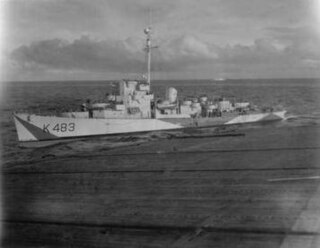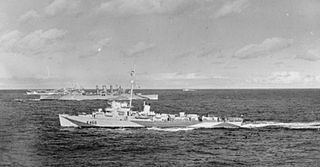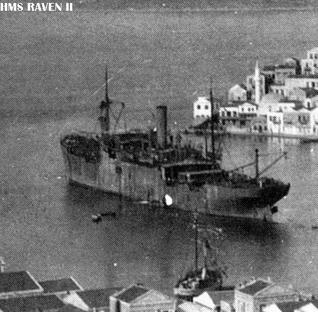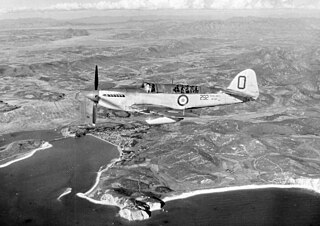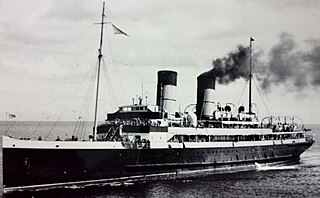HMS Vindex has been the name of more than one Royal Navy ship;

The Royal Navy (RN) is the United Kingdom's naval warfare force. Although warships were used by the English kings from the early medieval period, the first major maritime engagements were fought in the Hundred Years War against the Kingdom of France. The modern Royal Navy traces its origins to the early 16th century; the oldest of the UK's armed services, it is known as the Senior Service.
- HMS Vindex (1915), a mixed seaplane and landplane carrier acquired in 1915 and sold in 1920 (formerly SS Viking of the Isle of Man Steam Packet)
- HMS Vindex (D15), a Nairana-class escort carrier commissioned in 1943 and sold in 1947

HMS Vindex was a Royal Navy seaplane carrier during the First World War. The ship spent the bulk of her career operating the North Sea, where she twice unsuccessfully attacked the German Zeppelin base at Tondern and conducted anti-Zeppelin patrols. One of her Bristol Scout aircraft made the first take-off from an aircraft carrier in late 1915. Another made the first interception of an airship by a carrier-based aircraft on 2 August 1916, when it unsuccessfully attacked the Zeppelin LZ17. Vindex was transferred to the Mediterranean in 1918 and was sold back to her original owners in 1920. She was requisitioned again in 1939 and served through the Second World War as a troopship under a different name. After the end of the war, the ship was returned to her owners and was sold for scrapping in 1954.
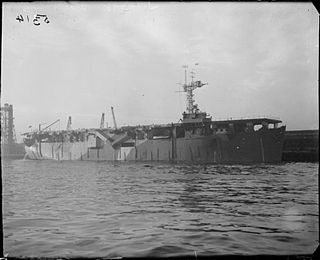
HMS Vindex (D15) was a Nairana-class escort carrier of the Royal Navy that saw service during the Second World War. She was built at Swan Hunter shipyards in Newcastle upon Tyne. When construction started in 1942 she was intended as a merchant ship, but was completed and launched as an escort carrier, entering service at the end of 1943.

The Nairana-class escort carrier was a British-built class of three escort carriers. They were constructed one each in England, Scotland and Northern Ireland to the same basic design during the Second World War for service with the Royal Navy.
| This article includes a list of ships with the same or similar names. If an internal link for a specific ship led you here, you may wish to change the link to point directly to the intended ship article, if one exists. |


